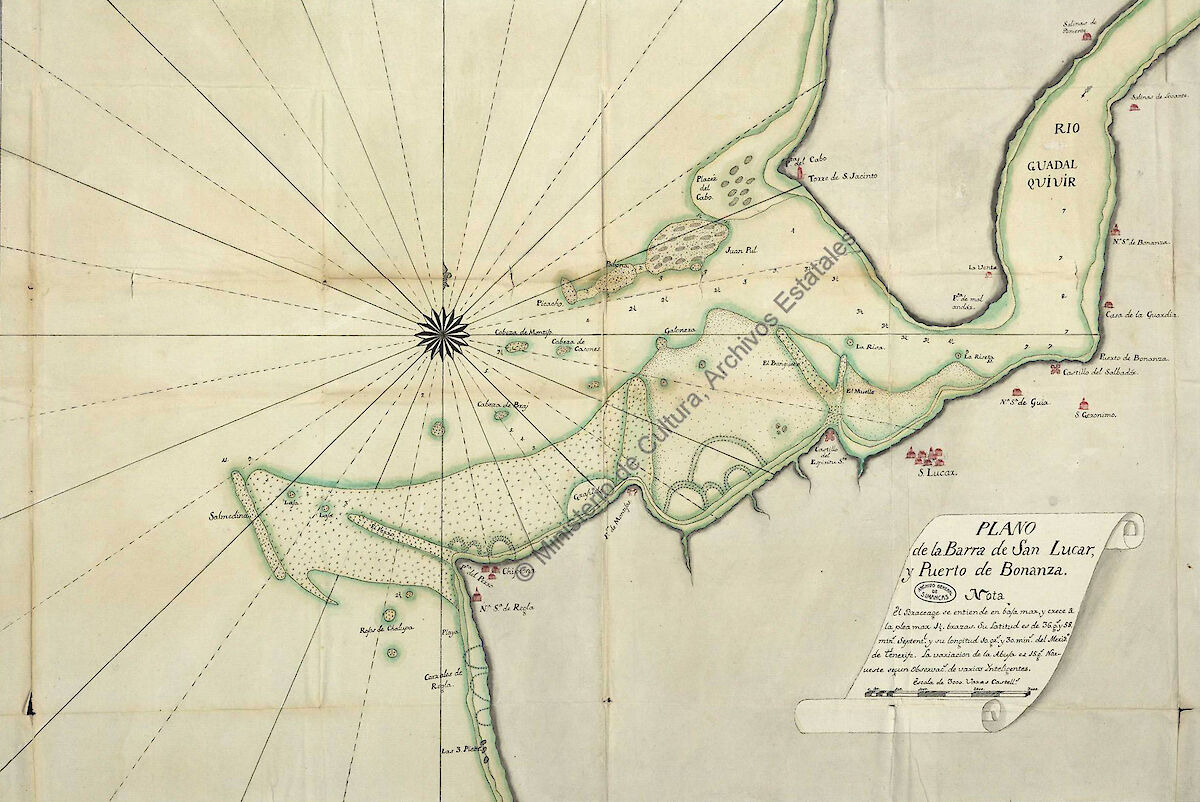Seville (ESP)

Map of the reef of Sanlucar and Puerto de Bonanza – Julián de Arriaga, 1766. Drawing on paper. General Archive of Simancas, MPD,47,078.
It was the main port for the West Indies fleet. Located in the Guadalquivir River, 80 km from the open sea, it was already known in ancient times. Its protected location and access to both the Atlantic and the Mediterranean led this port to flourish, as did the ports of Cadiz and Huelva, in the trade that stretched from Genoa to South Africa.
It was in 1503, when the Casa de Contratación (House of Trade) was set up and the city was granted the exclusive right to trade with the New World, that Seville reached its maximum splendor, mainly centering its activity around precious goods (gold, silver, pearls and precious stones…), just like the rest of ports and concentrating bureaucratic activity.
It was during this period that the city experienced its golden age, not only as exporters of goods but also as suppliers of people, goods and services necessary for the procurement, and manning of fleets taking on the Atlantic adventure.
Due to an increase in the tonnage of ships and the sedimentation in its shallow waters, together with the difficult river navigation to the open sea, Seville’s importance was diminished in favor of wider ports, such as that of Cadiz, which ended up housing the Casa de Contratación in 1717.